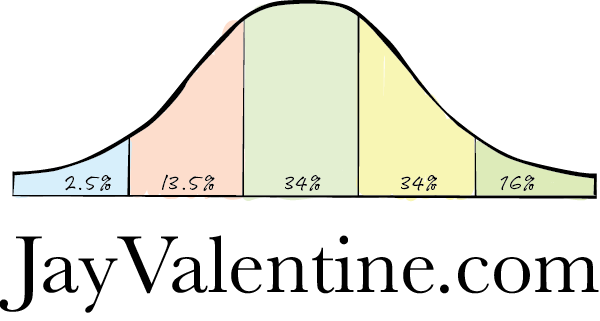
Every few years, out of the closet pops some sort of magic promising to change the trajectory of enterprise sales teams. And like any crowd movement, it seems all the rage, until, well, it doesn’t.
One of those rages was the Challenger Sale, a over-hyped book about getting sales people to do what they should have been doing in the first place, sell a solution not focus on features. Wow, thanks.
In the last few years, we have had people tell us they had GrowthPlay training, which should have made them super effective sellers.
Having had to sit through a 3 day waterboarding exercise with GrowthPlay, I felt the greatest benefit of that sales training might be that it uncovers the survival skills for those who could sit that many hours having someone beat a mantra into them.
Living through it proves one has the endurance needed for mindless sales exercises — thus remains a candidate for QBRs, endless sales meetings and daily forecasting calls. And if you like it, you are sales manager material.
My view is that all sales training is a good thing. GrowthPlay should work for those who try it. So will any other sales training program. The real question is whether GrowthPlay, or any of the other candidates, even after torturing a sales team to make it stick, will be the most effective action sales management can take.
Perhaps not.
Enterprise selling has fundamentally changed because now about 75% of all selling takes place before the rep engages. There is a thing called a web site and that is where clever prospects get their information. Thus, when they engage with a sales rep, they know what the product does, its competitors, how it is positioned and what its most likely positive outcomes will be.
No reason to hear the vaunted “mantra” your company paid some sales training company a half a million dollars to develop for you. It’s on the web site.
My thesis (not mantra) is fundamentally, actually radically different from many in the enterprise space today. My thesis is that 95% of of the sales journey is getting to the right person with a targeted solution to a significant problem (or an opportunity).
Once you are there—even a Sales Monkey can make the sale — or should be able to do so. GrowthPlay will help that monkey do it better.
I saw this at places like VMware, Dell, EMC where they employ an army of order takers — the software equivalent of a waitperson at the Cheesecake Factory — to take the order from someone who is there to buy something. They just needed the order taker to guide them through the labyrinthine VMware or EMC product catalogue or order process.
The day is approaching when sales robots will do this remarkably well. And they will not need to sit though a GrowthPlay torture exercise to do it.
My experience with GrowthPlay is that it effectively served up the jiu jitsu for that last 5% of the sales cycle.
You are in front of the customer. She is interested. You do the mantra exercise. She thoughtfully ponders. Then she jumps over the desk to thank you for making her successful with an “after state” set of benefits.
But today, boys and girls, this is not where the real selling is. At least not if you are bringing disruptive technology to market.
The real selling talent is on the 95% of the sales cycle, not the 5%. And these sales training programs do not help you there at all. They are almost exclusively focused on the last mile — how to get that buyer to jump over the desk in joy.
The money to be made is in the 95% of the sales journey. How do you find that “right person?” What are some of the moves one might use to navigate to them when they have literally over 100, GrowthPlay-trained sales reps calling and emailing them every day with “mantras”?
How do you get through the noise with a clear, concise signal so immediately recognizable to the prospect, they finish your sentences for you?
This is today’s enterprise sales battlefield and traditional sales training is not much help.
Jiu jitsu is effective—all jiu jitsu training will make you better than you were. But none is effective if you cannot physically grasp the opponent. That, dear reader is the issue.
So why the GrowthPlay action at so many enterprise software companies? Yup, you guessed it!
GrowthPlay is the “magic bullet” from the new Sales VP, often number 6 or 7. The last 5 guys couldn’t get the company the exit trajectory and speed, so bring in the new guy. And he, or she, needs something different — of course.
And that is almost universally “execution.” It seems so many venture series round D, E, F, G companies have found “execution” to be the problem they cannot grow sales beyond that 60% cost of sales from an overwhelming sales and marketing expense line.
So many software sales VPs have never seen any sales model other than the current one—massive outbound marketing generating “leads” that need a wildly overcompensated sales force to “close” tracked by daily Salesforce exercises with 5 categories for every “opportunity.”
Few if any are ever really successful. Most stay 18 – 24 months, get fired, then replaced by the new one who discovers that, “Hark!, the problem here is execution!” After they get fired, they find another hapless CEO who needs a story for his board other than “…look, there is no billion dollar market here!”
A fallacy, in sales and in life is something that sounds totally rational but is nonsense. Like this one: “there is a big hotel, it must have big rooms.”
So now we have the sales training fallacy. The last 5 Sales VPs sucked, so I, the new guy, have found that what is needed is that we all speak the same language, thus, execute.
Call GrowthPlay.
The GrowthPlay fallacy, and that of all these sales training programs, is they were built for 1970s selling models by people who only focus on that last 5%. They are, out of the box, generally obsolete.
Try this measure:
How many C-level meetings does your sales team get every week? Sorry, how about per year? Of the 8 selling hours in a day, how much time do your reps spend in front of the buyer, decision maker? Influencers do not count.
C’mon—we all know most sales reps only see a C level exec in an annual report or on TV shows.
So the Sales VP, number 7 here, brings in GrowthPlay or another equally irrelevant program, to solve a problem that does not exist. The reason you are not selling people is not your messaging. It is not your execution. It is not the web site.
The reason is you are not in front of the actual decision maker because your sales people, led by their Sales VP, do not have the skills to get you there.
They do not know how to craft a very compelling specific message, get it indirectly to a C level exec, and have him or her call you. Literally, all they do is run Salesforce reports and hire people like GrowthPlay.
We interview C level buyers — several times each week. That is a metric we count. Probably the only one that really matters in our business. Because if you are not dealing, face to face, engaged with the decision maker, you are burning fuel needlessly. And that fuel is cash.
And if you are venture funded (we are not), you are paying for that cash with the dilution of your equity and that of your employees.
We are having dinner with the CTO of a Fortune 10 company tomorrow evening, and he is helping us edit our white paper. That is customer intimacy. Actually prospect intimacy, since they have not bought yet. So, in those stupid Salesforce reports, what is the category for the CTO of a Fortune 10 company editing your white paper over dinner?
Is that like a 30% close?
Probably not in those reports because the Sales VPs have never done it, or even thought to do it.
They have never seen anything but the obsolete sales model almost universally used today by venture funded tech companies.
Did we cold call him? Did we email him with a Marketo-driven SPAM machine called a marketing department? Did we send him a letter with a GrowthPlay mantra in it?
No, we did none of these. But, our competitors sure did. Hundreds of times a month. And they each paid GrowthPlay or another such firm $500,000 for the opportunity to do what everyone else is doing and what the prospect is ignoring.
Our sales trained, sales managed, sales numerically-measured competitors daily overwhelm this C level exec to the point where he does not even give out his email. What email he does get is reviewed by a staff and only few ever get through.
He does not talk to VMware, Dell, EMC types. He knows what their firms provide. He has low level staffers, somewhere down there who talk to the DevOps and testing type vendors.
He only engages with those who have shown real value and such value that it can transform his company, a Fortune 10 entity, in a fight they are having with another equally large competitor.
So perhaps the real value of GrowthPlay is getting more sales reps to do the same failed exercises, focusing on that last 5%, and having them do them so much better.
The rest of us will be focusing on where the real battle is today. How do we get to that early adopter buyer, who really needs what we have but has never heard our name?
And we will continue to step around the GrowthPlay sales forces as we pass them in the lobby.
